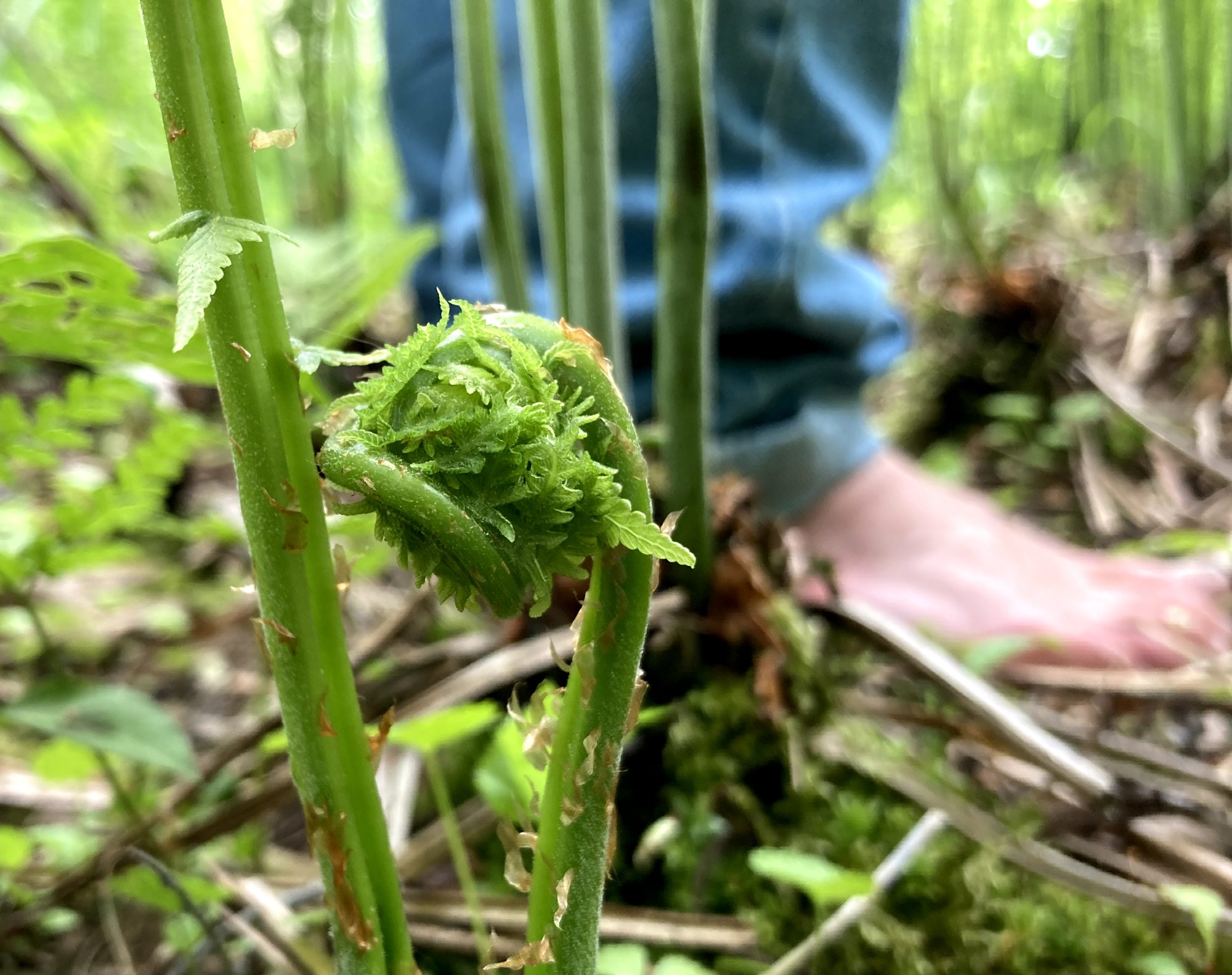We won’t find feral mangoes or papaya here–but it’s pretty cool that at least a few of our native and naturalized flora feature flavors very reminiscent of the tropics. I’d met some of these plants before; it just became thematic for me over the last year. There are more than these–some I’m currently forgetting, and some, I’m sure, that I haven’t encountered yet.
If you haven’t, may you meet some of them soon!
Mayapple
The first time I ate a really good, ripe mayapple fruit, I wanted to turn into a small wild hog for the day, rooting through the entire woods until it became too dark to see under the umbrellas of leaves, and continuing by smell until I fell asleep satiated in the midst of a patch of plants. At its best, the pulp of the mayapple (you really only want the pulp, not the skin, pith or seeds–and the fruit has to be fully ripe, without a trace of pale green remaining) tastes to me like the best pineapple guava we used to get in the co-op’s produce department: fragrant and floral, with a bit of tanginess. Incomparable, and one of those treasures you feel blessed to find in any quantity; every summer I watch the patches in the woods I frequent, and I almost always miss the perfect day, returning to find that fortunate animals have eaten them all, or that a summer storm has knocked all the fruit off to let it rot on the ground–and leave seed for more mayapples. Oh, those rare times of abundance, though.
Pawpaw
You can find at least one entire good book on papaw. I hardly want to write about it here. Kind of like a banana must be when you eat a truly tree-ripened specimen that’s not our familiar Cavendish? I don’t know, but probably. Like an amazing custard. Decadent. Fleeting. Huge. Magical.
Female Spruce Cones
Wow. I love spruce tips, as a tea and culinary herb, and use them in all kinds of applications. When my friend Amanda brought the big, tender, maroon young female spruce cones over last spring, though, I was blown away. Passion fruit. A little hint of citrus. A luscious, floral flavor and intoxicating aroma. I still can’t believe it. We put some in a spicy jelly, and in a ghost pepper hot sauce that vanished from the market table almost instantly. It’s so good. We only had a little last year, and I’m tremendously excited to try more.
Dame’s Rocket Flowers
A subtle revelation. Dame’s rocket greens are great–such a mild and pleasant mustard for cooking, and you can get a ton of them quickly around here, as long as you’re certain an area hasn’t been sprayed to kill the previous season’s flower stalks (which, um, they so often seem to do after the plant has gone to seed in many of the spots I’ve noticed–thus merely poisoning the area and making a perfect seed-bed for the next year’s plants). The flower, surprisingly, has a nice little taste of something like sweet cherry tomato crossed with a flavor that, when amplified a bit, really reminds me of fruit punch! This may qualify as “faux-tropical,” but it’s not like anything else I’ve tasted from here. We made a jelly from it, and a wild-fermented vinegar that, while fully acidified, remained stubbornly sweet and sippable. At my park ranger job, I was experimenting with repeatedly dead-heading the Dame’s Rocket on an erosive slope, rather than yanking its roots out of the ground. We’ll see what the effects of that are this season; in any case, it’s always a blast to make interesting food from a plant you’d ideally like to discourage.



 Rudbeckia lacinata is a prolific plant in prairie areas, especially near lakes and marshes, all around the Madison area. Sochan has been an important food plant for the Cherokee in particular, and, once you get to know it, it’s easy to see why. Young sochan shoots are delicious raw, and even better prepared simply, gently cooked in olive oil or bacon fat with a tiny amount of garlic and a little salt. The flavor reminds me of green beans, but better, with a hint of the slight pepperiness (it’s not the right word–I’m searching for a good description) characteristic of its other edible cousins in the Aster family.
Rudbeckia lacinata is a prolific plant in prairie areas, especially near lakes and marshes, all around the Madison area. Sochan has been an important food plant for the Cherokee in particular, and, once you get to know it, it’s easy to see why. Young sochan shoots are delicious raw, and even better prepared simply, gently cooked in olive oil or bacon fat with a tiny amount of garlic and a little salt. The flavor reminds me of green beans, but better, with a hint of the slight pepperiness (it’s not the right word–I’m searching for a good description) characteristic of its other edible cousins in the Aster family.